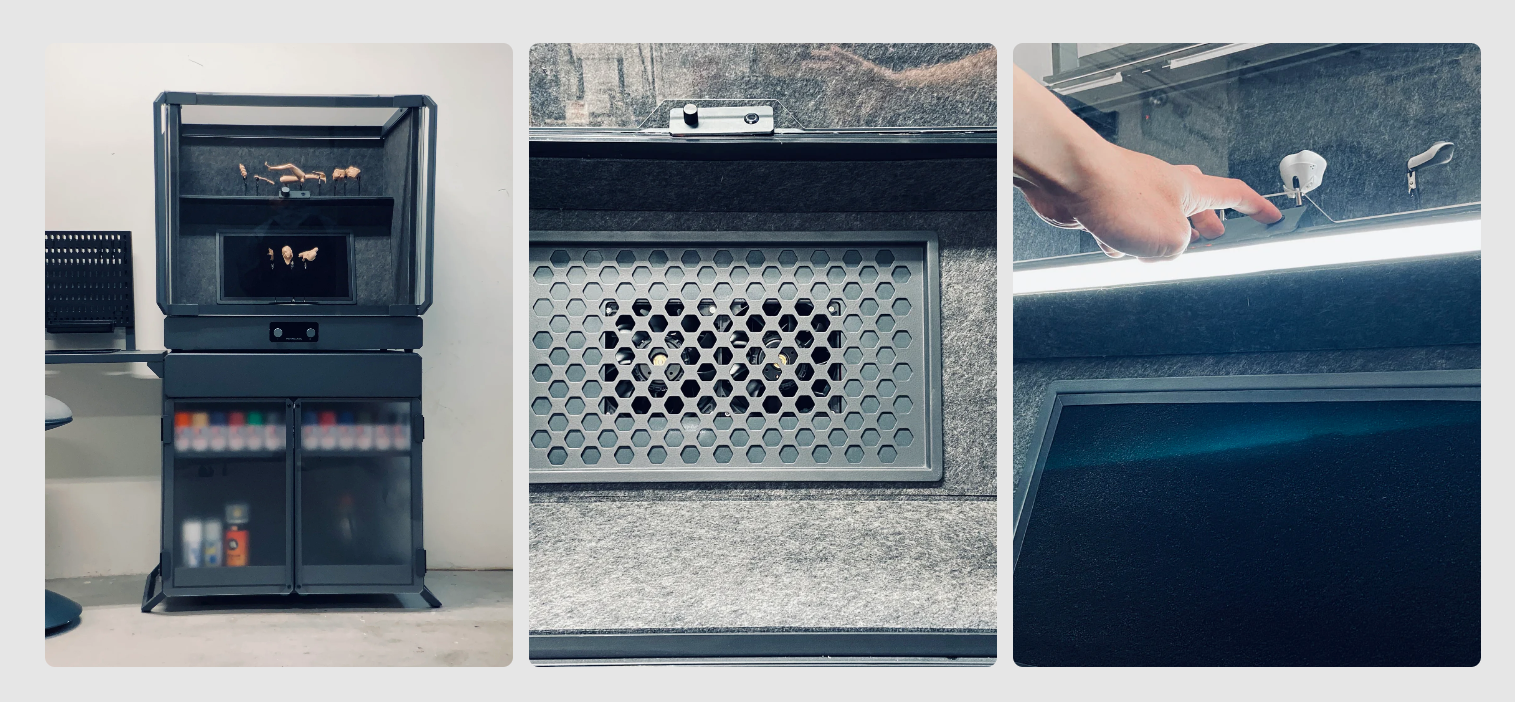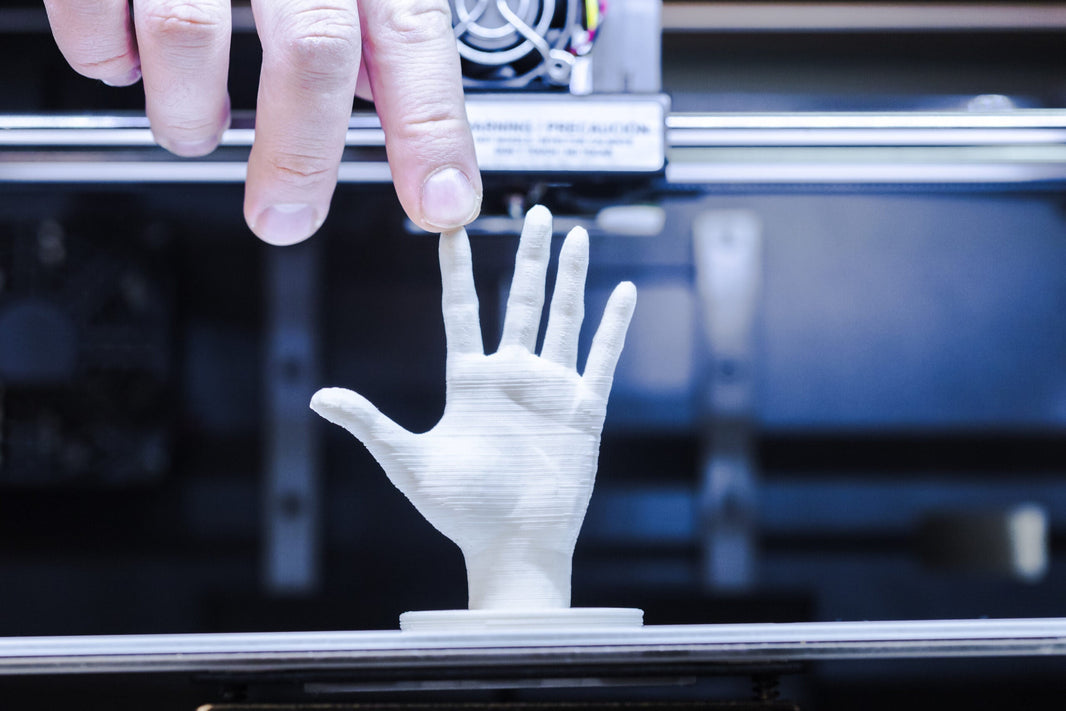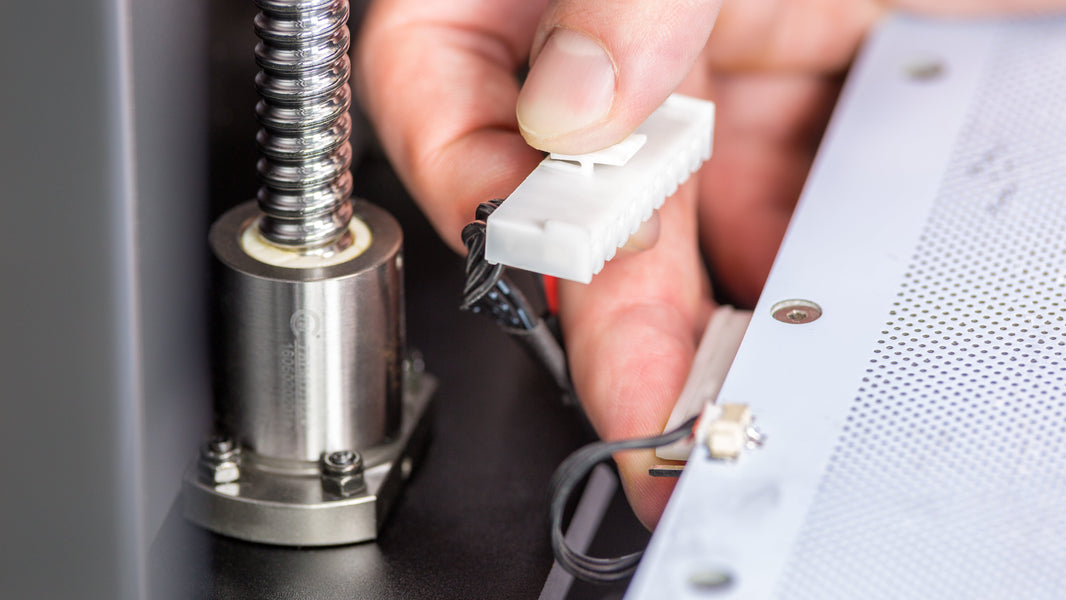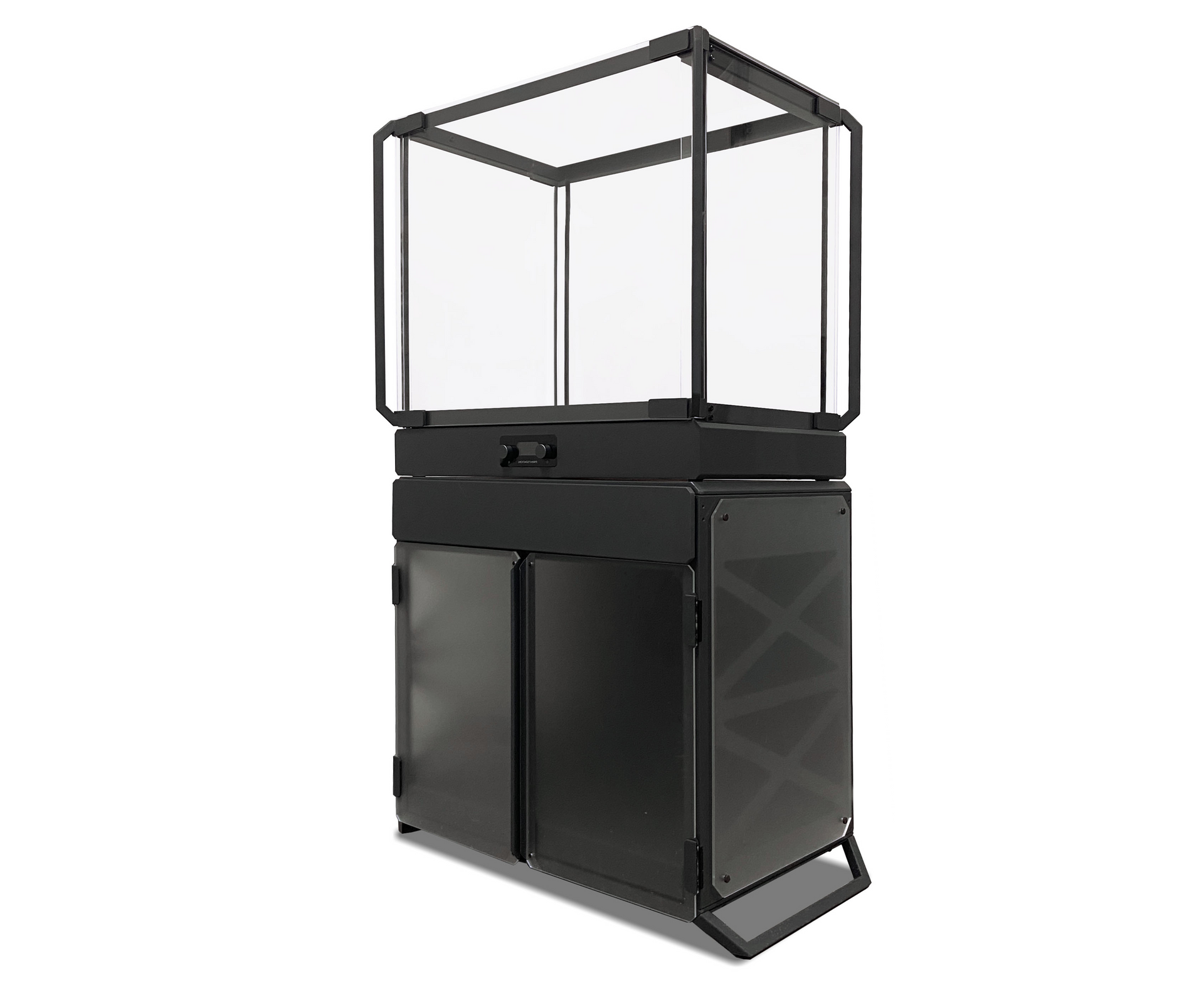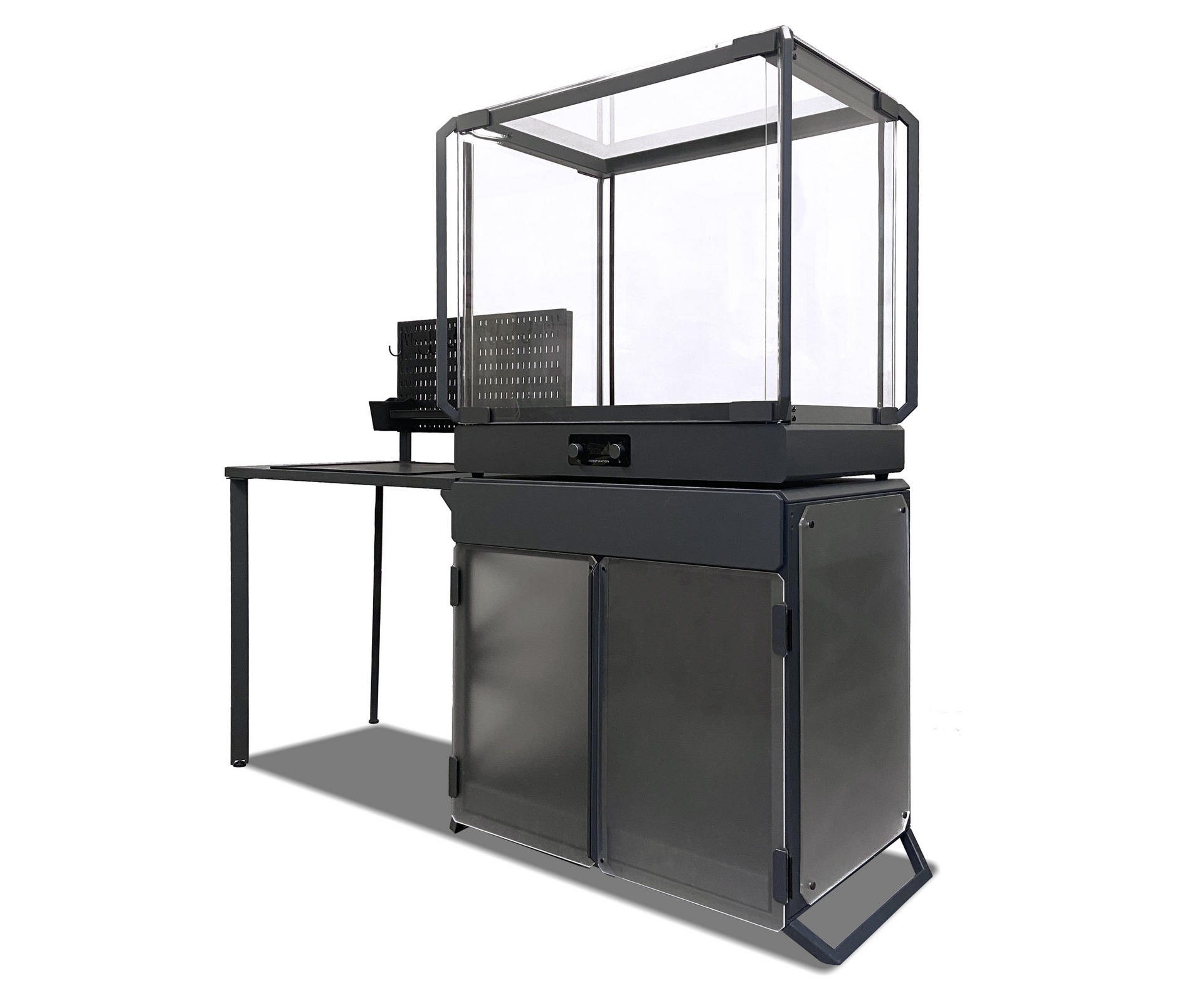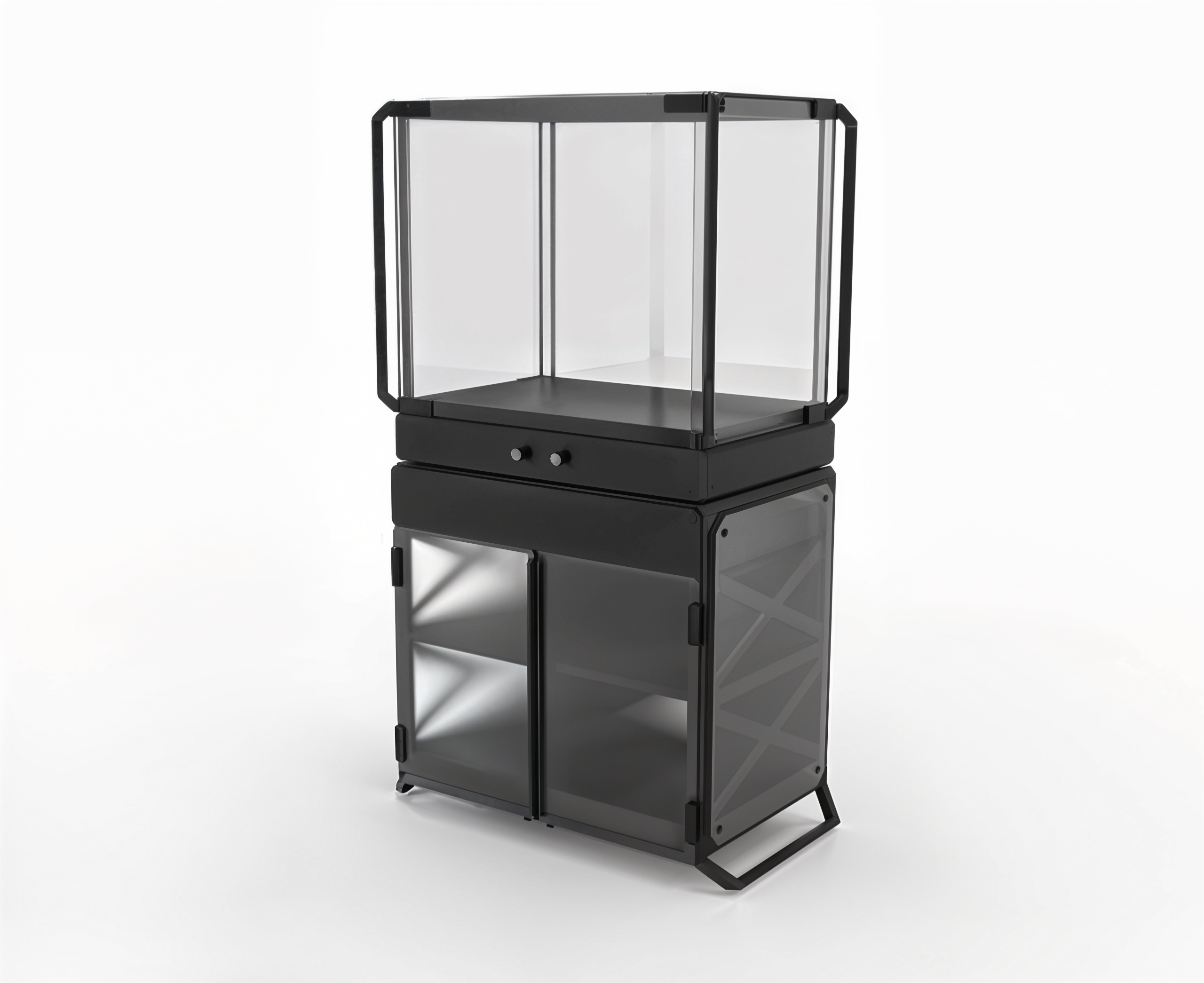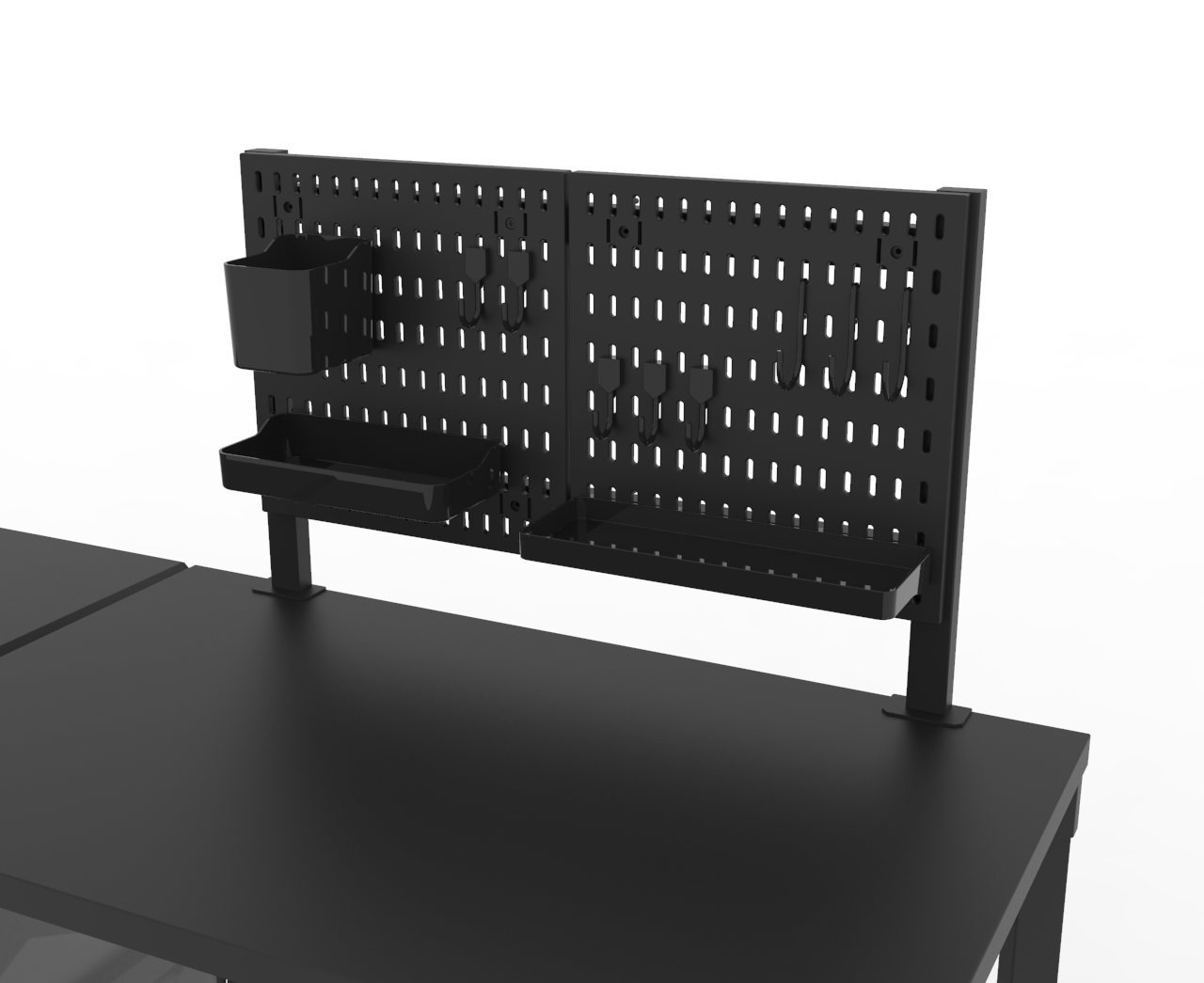By Yau Suet, Senior Model Painter at UFM Design
When I first started painting miniatures, my "workspace" was the kitchen table. I'd unpack everything, paint for a few hours, then hurriedly clean up before dinner. Sound familiar? If you're still working from a makeshift space, or if you're looking to upgrade your current setup, this comprehensive guide will help you choose the perfect paint station that matches your needs, space, and budget.
Why Dedicated Paint Stations Matter
After eight years of professional model painting at UFM Design and countless hours helping hobbyists upgrade their workspaces, I've seen firsthand how a proper paint station transforms both the painting experience and results. Here's why dedicated paint stations are game-changers:
- Time Efficiency: No more unpacking and packing supplies for each session
- Paint Preservation: Proper storage extends the life of your paints
- Workflow Optimization: Everything within reach improves technique
- Motivation Boost: A dedicated space encourages regular practice
- Health Benefits: Better posture, lighting, and ventilation
Assessing Your Needs Before Purchasing
Before diving into specific recommendations, let's analyze what you truly need:
1. Space Considerations
Your available space dictates your options:
- Small Apartments: Consider wall-mounted options or compact fold-away stations
- Dedicated Hobby Room: Full-sized workstations become viable
- Shared Spaces: Look for mobile solutions with storage
2. Painting Style and Medium
Different painting styles require different setups:
- Brush Painters: Need excellent lighting and brush storage
- Airbrush Users: Require ventilation, compressor space, and spray booths
- Mixed Media: Need modular systems that accommodate various tools
3. Collection Size
Be honest about your paint and supply collection:
- Beginners (10-30 paints): Simple organizers work fine
- Intermediate (30-100 paints): Dedicated racks and drawer systems
- Advanced (100+ paints): Consider custom solutions with cataloging systems
Essential Components of a Quality Paint Station
After testing dozens of setups with our UFM Design team, we've identified these key components:
Ergonomic Work Surface
Look for:
- Height between 28-32 inches (adjustable is best)
- Depth of at least 24 inches for comfortable reach
- Smooth, cleanable surface (silicone mats are excellent)
Lighting System
Inadequate lighting ruins paint jobs. Invest in:
- Color-accurate lighting (5000K-6500K color temperature)
- Adjustable positioning
- Sufficient brightness (minimum 800-1000 lumens)
Paint Organization
Accessibility transforms your workflow:
- Front-facing storage to see all paint colors
- Tiered systems for better visibility
- Categorization options (by color, brand, or project)
Tool Management
Keep tools visible but protected:
- Brush holders that protect bristles
- Accessible water pot positions
- Dedicated spaces for frequently used tools
Storage Solutions
Consider:
- Drawers for projects-in-progress
- Closed storage for infrequently used items
- Clear containers for small bits and components
Top Recommendations for Different Budgets
Budget-Friendly Options ($50-150)
If you're just starting out:
- DIY IKEA Hack: The RÅSKOG utility cart ($30) with added paint racks
- Desktop Organizers: Combination of craft organizers and desk lamp
- Wall-Mounted Solution: Pegboard systems with custom holders
Mid-Range Investments ($150-300)
For serious hobbyists:
- HobbyZone Modular Workshop: Customizable wooden modules
- Portable Paint Stations: Carry-case style with built-in organization
- Converted Computer Desks: With added lighting and organization
Premium Setups ($300+)
For professionals and dedicated enthusiasts:
- Full Airbrush Stations: With integrated ventilation
- Custom Workshop Furniture: Specially designed for model painting
- The PaintStation by UFM Design: Our pinnacle solution combining ergonomics, organization, and professional-grade features
The PaintStation Difference
While researching for this article, I've been testing our newest UFM Design innovation—the PaintStation. What sets it apart:
- Integrated Air Filtration: Removes harmful particles and paint odors
- Precision Lighting System: Adjustable 6500K LED lighting with multiple brightness settings
- Advanced Organization: Accommodates over 200 paints with customizable layouts
- Ergonomic Design: Created specifically for long painting sessions without strain
- Expandable System: Grows with your hobby through modular add-ons
Making the Right Choice
Whichever route you choose, consider these final tips:
- Start with fundamentals: Good lighting and comfortable seating come before fancy storage
- Plan for growth: Your paint collection will expand, guaranteed
- Prioritize ergonomics: Your back and eyes will thank you
- Consider mobility: Even permanent setups benefit from some flexibility
- Visit our community gallery: See real setups from UFM Design customers for inspiration
Conclusion
Your paint station is more than just furniture—it's the foundation of your hobby experience. A thoughtful setup reduces frustration, improves results, and makes painting more enjoyable. Whether you're converting a corner of your living room or building a dedicated hobby space, the perfect paint station will transform your modeling journey.
Next week, I'll be sharing my in-depth guide on "Top 5 Paint Organization Systems for Serious Model Makers" where we'll dive deeper into specific organization solutions. Until then, happy painting!
About the Author: Yau Suet is a senior model painter at UFM Design with over 8 years of professional experience in miniature painting and hobby workspace design. When not painting or writing, Alex enjoys photographing painted miniatures and teaching painting workshops.


